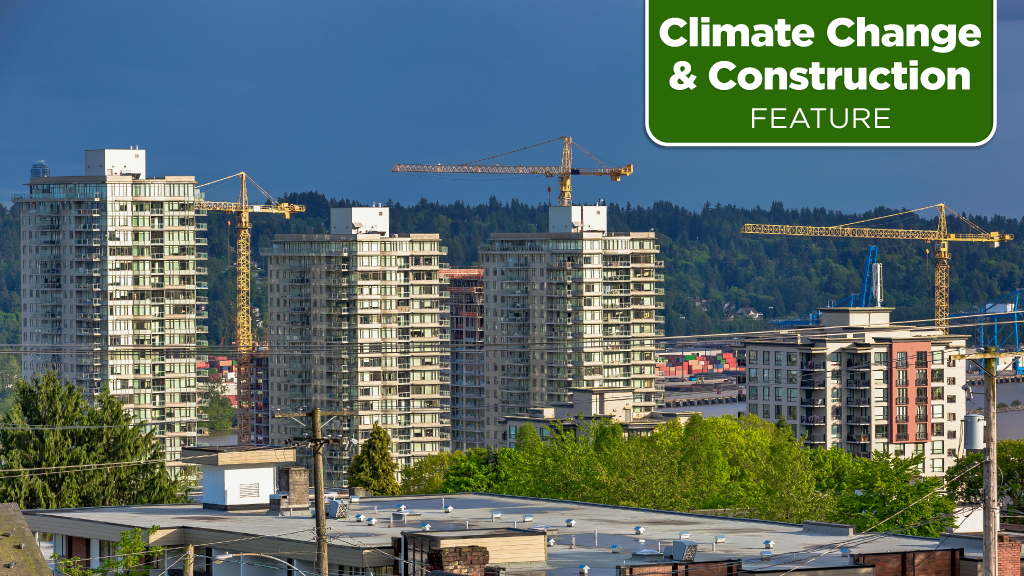The long-awaited National Building Code updates known as the 2020NBC is scheduled to be released to the industry in the next month or so, two years overdue. In the meantime, Natural Resources Canada told the Daily Commercial News, “Provinces and territories have been provided with advanced copies of the changes to the national model codes so that they may prepare for adoption and enforcement of new provisions, as applicable.”
What is already known about the NBC is that it will use what is called the Reference Building Approach, or RBA, as a code compliance path to energy efficiency improvement. Many experts point out that this approach will not deliver the energy efficiency results that Canadians expect and want, nor will it enable Canada to achieve international norms for building efficiency.
To learn why, The Daily Commercial News spoke with Rob Bernhardt, the founding CEO of Passive House Canada and co-author of a recent paper on the Reference Building Approach and the UN Framework Guidelines for Energy Efficiency Standards in Buildings.
What is the Reference Building Approach?
It’s a code compliance tool that compares the energy efficiency of a proposed building to an identical but hypothetical building built to minimum code requirements. The difference is calculated as percentage improvement over minimum code.
The BC Step Code permits the use of the RBA. Hasn’t that been a success?
The Step Code was heralded as a great step forward when it was introduced in 2017, providing a solid foundation to be improved upon. Since then, various amendments have reduced rather than improved its effectiveness. One of those decisions was to permit the use of the RBA for Part 9 Buildings.
Using the RBA moved the Step Code away from being an outcome based code, which meant buildings were no longer required to achieve specified performance outcomes. Instead, a hypothetical modelling exercise could be undertaken to demonstrate the building would be a certain percentage better than it could have been, without calculating its actual performance.
What would that outcome-based structure look like?
Outcome based codes are the international best practice as reflected in the UN Framework Guidelines for Energy Efficiency Standards in Buildings, the EU Energy Performance of Buildings Directive, plus numerous papers and reports. An outcome based code identifies performance targets (or outcomes) measured in energy use intensity metrics. These performance targets set a limit on various uses of energy per square meter of floor area. This approach has been successfully applied across all building types in various climate zones. In Canada, the cities of Vancouver and Toronto use absolute performance targets in their own zero-emissions building plans, and the BC Step Code still does for Part 3 buildings. New Zealand is apparently planning to adopt this approach as well. It’s very similar to the Passive House approach.
But won’t the 2020NBC be an improvement over the previous version?
It may offer modest improvements in some respects, but we are far past the time for small, incremental steps. The RBA simply does not enable our buildings to achieve international norms, or deliver outcomes aligned with our climate commitments and demands increasingly expected by the market.
Our paper highlighted the extent of the gap between what the RBA delivers and what is required. For example, of the first 125 homes permitted under the Step Code in the City of Richmond, none delivered the energy efficiency of the top tier of Step Code targets, or the 80 per cent efficiency gain identified in Clean BC. Furthermore, the RBA is well known to be a significant contributor to the performance gap endemic in our industry – the gap between anticipated and actual performance.
The shortcomings of the RBA are exacerbated in Part 9 buildings by the use of HOT2000 and the ERS system, Canada’s default energy model and rating system for homes. For example, by automatically distributing windows equally on all facades, the HOT2000/ERS system can lead to completely arbitrary results for a reference building. It is bizarre that we permit its use. If not for inertia, nobody today would design a compliance system that way.
What about other energy needs in a building, like plug loads? Are they taken into account?
No, under the BC Step Code at least, they are not. In an efficient Part 3 building, such “unregulated loads” can be the largest category of energy use, which is why best practice requires a whole building approach. Failing to regulate a significant energy use leads to energy waste, which can often be reduced through good design.
Wouldn’t on-site monitoring and verification of energy use expose this performance gap so it could be addressed?
Yes, but monitoring and verification of building performance is not part of the building code. There are plans to introduce it through benchmarking and labelling initiatives, but that does not give a remedy to the owner saddled with a building that does not perform as predicted. Do we ask owners to spend millions retrofitting their new buildings simply because we permitted them to be built without an accurate prediction of their actual performance? Why not just build them properly in the first place?
Do the same concerns apply to both Part 3 and Part 9 buildings?
The low performance outcomes and the gap between anticipated and actual performance is common to both, although the specific causes tend to be different.
Would you say the 2020NBC is a missed opportunity?
It is, and it’s such a shame. When so much of our industry and so many Canadians are ready for better buildings, our code development system continues to adopt widely discredited practices known to be incapable of delivering the buildings Canada needs and deserves.











Recent Comments
comments for this post are closed